WHERE THE FORTS ARE STILL ALIVE
Jaisalmer Sightseeing Taxi Tour
Udaipur taxi offers jaisalmer sightseeing taxi services at very best price in jaisalmer with all ac cabs.Situated in the center of the Thar desert, Jaisalmer has earned its name as The Golden City due to the yellow sandstone which has been used in all of its constructions.The city of Jaisalmer also acts as the guard to western Rajasthan (and India’s) frontier.This 'Golden City’ is located close to the Pakistan border and in near proximity to the Thar Desert. The city’s most outstanding landmark is the Jaisalmer Fort, also called Sonar Qila (Golden Fort). Unlike most other forts in India, Jaisalmer Fort is not barely a tourist attraction. It houses, shops, hotels and ancient has (homes) where generations continue to be.
Jaisalmer traces its origin to the 12th C. History tells us of Rawal Jaisal, the eldest heir of the Rawal of Deoraj, was passed over for the throne of Lodurva and a younger half-brother was crowned queen. Rawal Jaisal went looking for a new location to put up his capital when he came across sage Eesul.The sage told him about Krishna’s prophecy which stated that a descendant of his Yaduvanshi clan would set up a new realm at this same place. It was in 1156 that Rawal Jaisal constructed a mud fort, named it Jaisalmer after himself and declared it his capital.

Jaisalmer Fort
The Jaisalmer Fort also goes by the name Sonar Quila (Golden Fort) as it climbs from the desert itself and appears to become one with the golden hues of the backbone. The setting sun adds its own magic and shrouds the fort with mystique. The fortress is constructed in the classic manner of the royals by local artisans.This fort is a world heritage site and forms an important plot point.

Jaisalmer Government Museum
Set up by the Department of Archaeology and Museums, it is a premier draw for tourists visiting Jaisalmer. The most outstanding exhibit is the trophy of Rajasthan‘s state bird Godawan (the great Indian bustard).Traditional household items, rock-cut crockery, jewelry and statues from the 7th and 9th century AD displayed here are leftovers of the city’s rich ethnic inheritance.

Nathmal Ji Ki Haveli
Two architect brothers built Nathmal Ji Ki Haveli in the 19th C. They acted on the heavily from two sides and the result is a beautiful blend of the symmetrical structure. Miniature style paintings and mighty Tuskers carved out of yellow sandstone are used for ornamentation.

Salim Singh ki Haveli
This Haveli was constructed in the beginning half of the 18th century and a percentage of it is still occupied by descendants of the original occupants. The high arched roof is held up by carved brackets designed in the form of peacocks.Legend has it that there were two additional wooden storeys.

Jain Temples of Jaisalmer
The Jain Temples located in the Jaisalmer Fort date back to the 12th and 15th centuries. The temples are dedicated to Rikhabdevji and Shambhavdevji, famous Jain hermits known as 'Tirthankars' (wise teachers who instructed people how to attain nirvana).

Gadisar Lake
Gadisar Lake was built in the 14th century by Maharawal Gads I Singh to meet the water needs of his arid lands. Seeing its importance, many small temples and shrines were built around it, translating it into a pilgrimage center and a tourist attraction.

Patwon Ki Haveli
Among the largest and the most elaborately carved havelis in Jaisalmer, this five-storey structure sits proudly in a narrow street. While the haveli has lost some of its early glory, a few paintings and mirror work art can still be seen on the inside walls.

Mandir Palace
The five-Storeyed majesty of the Badal Mahal (Cloud Palace) is farther heightened by its pagoda-like Tazia Tower. Each level of the palace has an intricately carved balcony. The Badal Palace owes its beauty to the accomplishments of Muslim craftsmen.
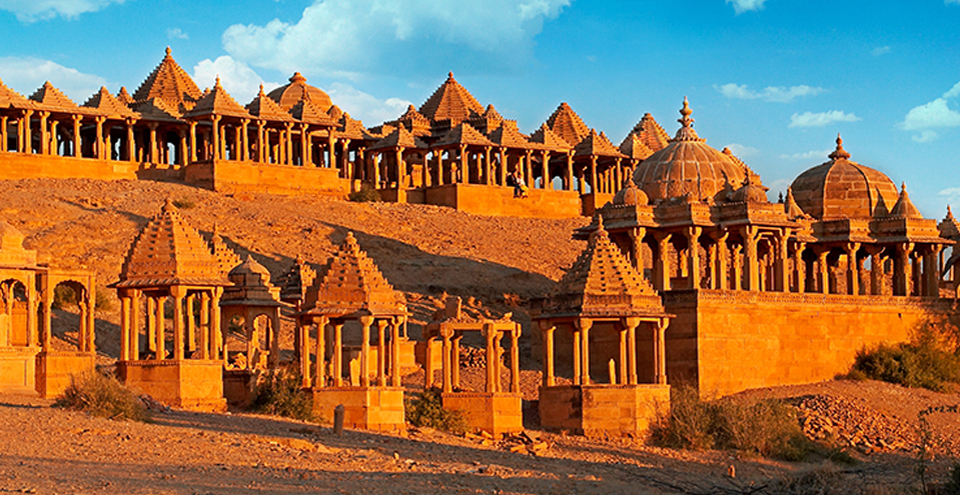
Bada Bagh
Some 6 kilometers to the north of Jaisalmer lies Bada Bagh, also called Barabagh (literally Big Garden). This garden complex houses Chartres or royal cenotaphs of the Maharajas of Jaisalmer state, including that of Jai Singh II.
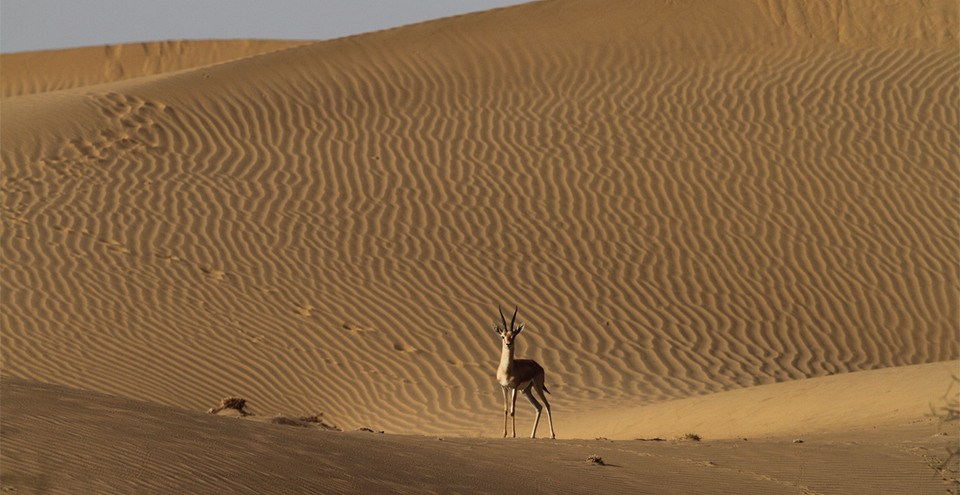
Desert National Park
The Desert National Park displays the best of the three desert ecosystem and its varied wildlife. The Park is formed by undulating sand dunes, jagged rocks, dense salt lake bottoms and inter-medial areas.

Ramdevra Temple
Located 12 kilometres from Pokhran on the Jodhpur – Jaisalmer route lies Ramdevra Temple. While most people assume it is a temple dedicated Lord Ram, it is in fact, dedicated to renowned saint Baba Ramdevji.
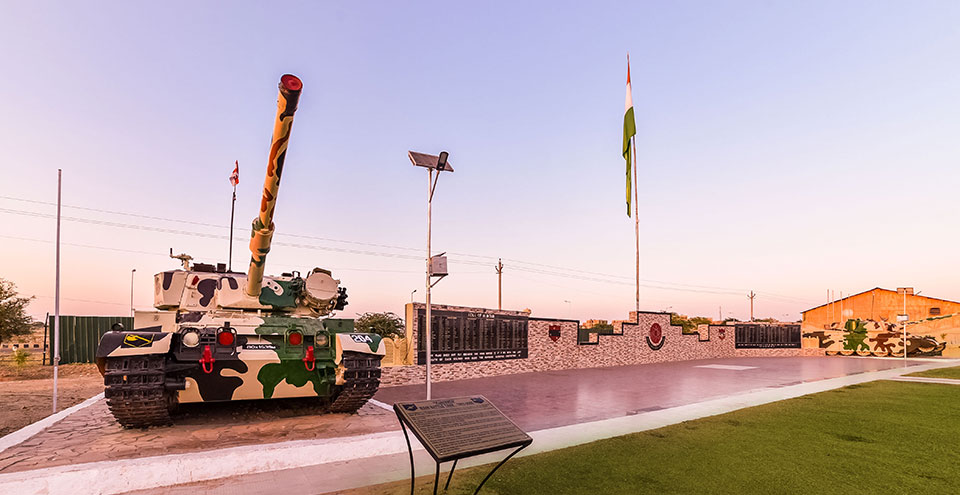
Jaisalmer War Museum
“If you ate today, thank a farmer, and if you ate in peace, thank a soldier!” Our military and defense forces spend their days facing perils and hardships, so the citizens of India can sleep peacefully.
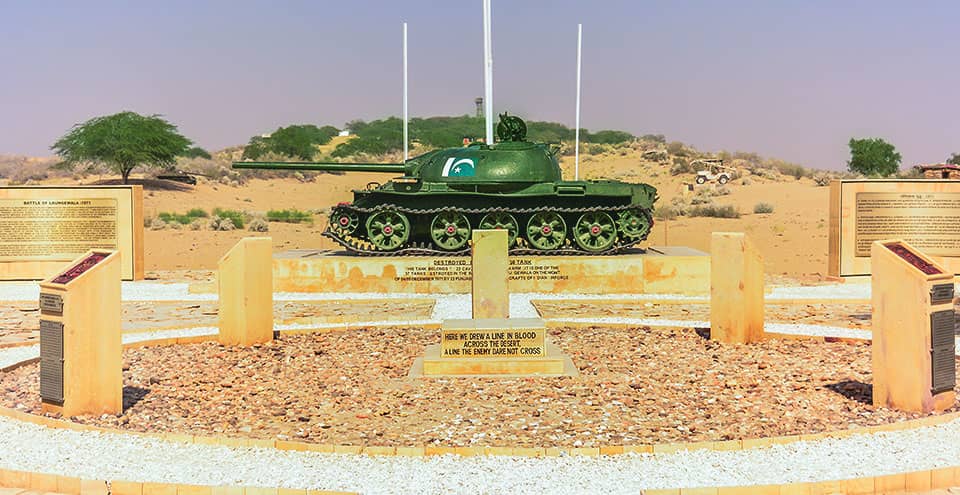
Laungewala War Memorial
One of the first major battles in the Western sector during the Indo Pakistani War of 1971, the Battle of Laungewala is an invigorating narrative of bravery in the face of insuperable odds.A shining example of the courage, bravery and valor of the Indian soldiers, the Battle of Laungewala created history on 4 December, 1971.

Akal Wood Fossil Park
Rajasthan is a treasure trove of history and historical artifacts, but one post in particular takes you beyond the ‘timeline of the present’, right into the prehistoric Jurassic era.The Akal Wood Fossil Park is a 21-hectare preserved area that rests approximately 17 km from Jaisalmer.

Vyas Chhatri
Located in Bada Bagh in Jaisalmer, Vyas Chhatri is one of the most beautiful examples of Rajasthani architecture. This old Brahmin cemetery, full of local versions of cenotaphs, is given to Veda Vyaas, the sage who wrote the epic, Mahabharata.
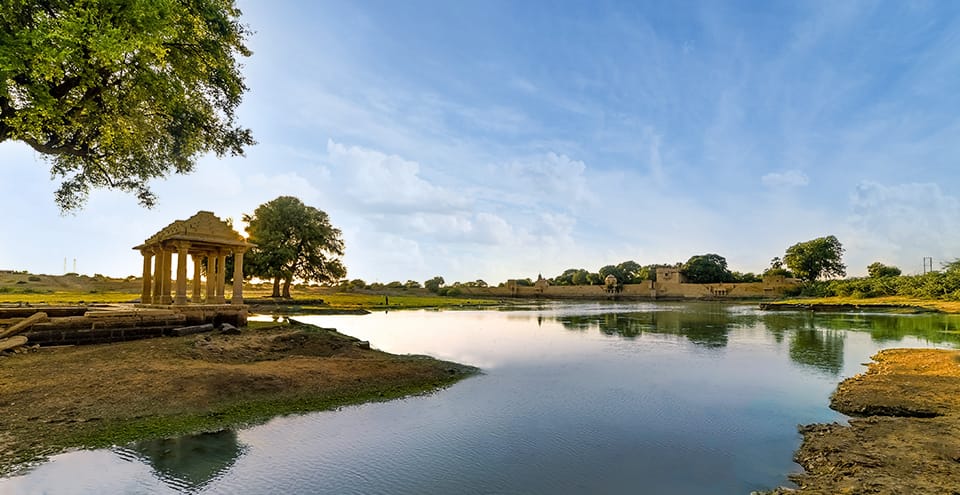
Amar Sagar Lake
Amar Sagar Lake, situated roughly 7 km towards the westerly outskirts of Jaisalmer, is a lake cum oasis lying adjacent to the Amar Singh Palace. The castle itself was established in the 17 th century.
